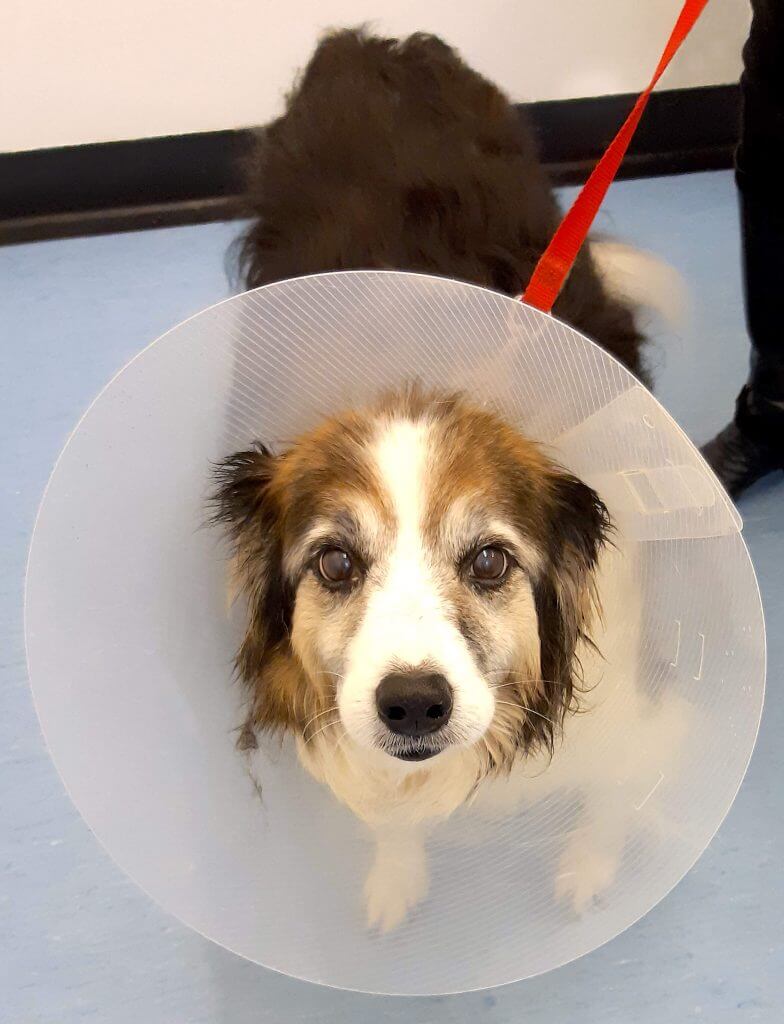What is a skin tag?
Skin tags in dogs are benign growths (tumours) on the surface of the skin which are a relatively common phenomenon in dogs (they can also be found in cats but less frequently). Skin tags are most commonly found in older animals and there are various medical terms used to describe skin tags, such as acrochordon, fibroepithelial polyp and fibrovascular papilloma.
They can be variable in size and shape but are often long and thin, sometimes have a narrow stalk attaching them superficially to the skin and, in some larger cases, can be quite dangly. Skin tags can occur anywhere on the dog’s body but are more frequently seen in certain areas such as the head, neck and chest. Skin tags grow slowly and can appear on any breed of dog, although larger breeds and middle-aged/older dogs are more at risk of developing them.
What causes a skin tag on dogs?
Why skin tags appear on dogs is not fully understood, but they do often form in areas of friction, such as:
- Armpit
- Chest (where the body rubs on the floor when lying down)
- Abdomen / Mammary glands
When can dogs skin tags become a problem?
Due to the fact that they are benign growths, skin tags are not generally of great concern beyond the cosmetic appearance. However, in some cases they may get caught on objects or get pulled when grooming, causing them to bleed or cause your pet pain and discomfort — in these cases, surgical removal may be advisable.
Signs of dog tags changing
Whilst dog skin tags are usually harmless, changes in their appearance and frequency could be signs of a more serious condition. If you see your dog’s skin tags exhibit any of the following changes, we advise seeing a veterinarian for a full examination and diagnosis:
- The skin tag begins to bleed or develops a discharge
- Any changes in size or colour
- Additional skin tags forming in the same location
- The dog becomes more bothered or appears to be in pain
- Excessive licking, itching or ascribing at the area
Treatment for dog skin tags
We would never advise removing skin tags at home – this may result in pain to your pet, risk of bleeding, as well as a risk of infection. There could also be problems if the growth is actually something other than a skin tag.
Although skin tags often have a relatively characteristic appearance, we would always advise that any new skin growths be examined by a veterinary surgeon to check that we are not missing something more sinister that requires further treatment.
In some cases, we may suggest further testing as many different skin growths can look relatively similar. However, this may not be necessary if we strongly suspect that the mass is just a skin tag.
If it does indeed need to go, skin tags can be removed in surgery with the dog under a local anaesthetic. Generally, the animal will return home the same day as the procedure, with close monitoring over the following weeks to ensure the area hasn’t been scratched at and the wound has healed correctly.
If you have any concerns over your pets’ skin growths, please contact Animal Trust for a free consultation and we can examine the growth and ascertain if any action is required.




